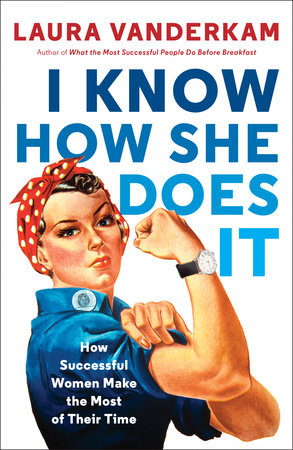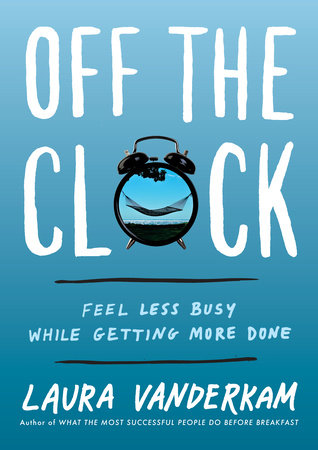Seize the (Small) Moment:
Author Laura Vanderkam Explores How Working Women Can Make Time for the Things That Matter
by the Brightly Editors
It’s no secret that juggling work life and family life can be tough. And all those stories we hear about how little sleep we’re getting and how stressed out we all are don’t exactly help. That’s why we were excited — and frankly, pretty relieved — to talk to Laura Vanderkam, author of I Know How She Does It: How Successful Women Make the Most of Their Time. In researching the book, Laura dug into the data behind the headlines and horror stories to see how successful women were actually spending their time, and give us all some helpful strategies. Read on for her surprising findings and some terrific time-management tricks.
What should readers know about Laura Vanderkam?
I’m a journalist and author who specializes in time management and productivity. I’m also a mom of four young kids (ages 8, 5, 3, and a baby). I live outside Philadelphia.
What inspired you to write I Know How She Does It?
A lot of the literature on women, work, and life seemed very negative. It focused on the stressful moments, rather than the positive ones. I also noticed that much of this literature was based entirely on anecdote. I wanted to add some data to this debate. So I collected time diary data on 1001 days in the lives of professional women and their families. I could see how much and when they worked, and what their personal lives looked like too.
There’s a lot of debate about the idea of balance — does it exist? Is it possible? Does it create too much pressure on women? Where do you weigh in on the whole idea of balance?
I don’t like the term balance because it pits work and life against each other on opposite sides of the scale. For one to gain the other has to lose — and who wants life to lose? It suggests that the only possibility is to cut back on work. I suspect that’s why part-time work seems like such a good solution. But in terms of sheer mathematics, most people are balanced toward the personal side, not the work side. There are 168 hours in a week. If you work 40 and sleep 8 hours per day (56 per week), that leaves 72 hours for other things. That’s a lot more hours than you’re working! If you work a 20-hour schedule, that leaves 92 hours for other things. That can be a great option, and there are plenty of wonderful things one can do other than work for pay, but such a schedule is not exactly “balanced.”
In your research for the book, you looked at how working women (who make at least $100,000 a year) spend their time. What was surprising to you about what you found?
One thing people find most surprising is how much these women slept! They all had demanding jobs (that comes with the territory of earning six figures). They all had kids. And yet they slept on average 54 hours per week. With 7 days per week, that comes out to just a little bit under 8 hours per day. That is not bad at all. We often think that any woman who has a demanding job won’t see her family, and if she somehow manages to see her family, she won’t sleep. But in reality, getting adequate sleep is the norm. About 90 percent of the women in my study got at least the 7 – 9 hours of sleep per day that public health experts recommend, averaged over the entire week.
What are some key strategies — from your research and from the book — for busy moms?
Anyone who wants to spend her time better should figure out how she’s spending it now. I suggest keeping track of time for a few days, or ideally a week. It’s an enlightening exercise. It’s not so much about how much time we waste (though almost all of us do). It’s often about figuring out which of the stories we tell ourselves are true, and which aren’t. Many people are surprised to find out how much time they’re spending with their kids.
The women in my book managed to work long hours while still preserving family time by moving work around. Many did what I call a “split shift.” They’d leave work at a reasonable time, go spend the evening with family, and then do more work after the kids went to bed. Some worked long days strategically (like while traveling) so they could have more reasonable hours when they got home.
Finally, many women I studied were good at seizing small bits of time. Ten minutes before you need to get in the car in the morning is enough time to read a story with your kids. If the carpool is 15 minutes late bringing your kids back, you could write in a journal or do some yoga rather than checking your email (again).
Has what you’ve learned through the process of writing the book inspired you to make changes in your own life?
I’m trying to get better about seizing small moments for one-on-one interactions with my kids. When you have four kids, a lot of interaction with them is about crowd control. But even if I can just get 5 minutes before bedtime focused solely on one child, that’s a great moment.
What advice do you wish someone had given you 10 years ago?
Your kids are going to give you a lot of new things to write about! They’ve helped my career a lot in that way.
-
Books by the Author:
-
Laura Vanderkam is the author of I Know How She Does It: How Successful Women Make the Most of Their Time. She is also the bestselling author of What the Most Successful People Do Before Breakfast, All the Money in the World, 168 Hours, and Grindhopping. She is a frequent contributor to Fast Company’s website and a member of USA Today’s board of contributors. Her work has also appeared in The Wall Street Journal, The New York Times, Fortune, and other publications. She lives with her husband and their four children outside Philadelphia. For more information see www.lauravanderkam.com and @lvanderkam on Twitter.


